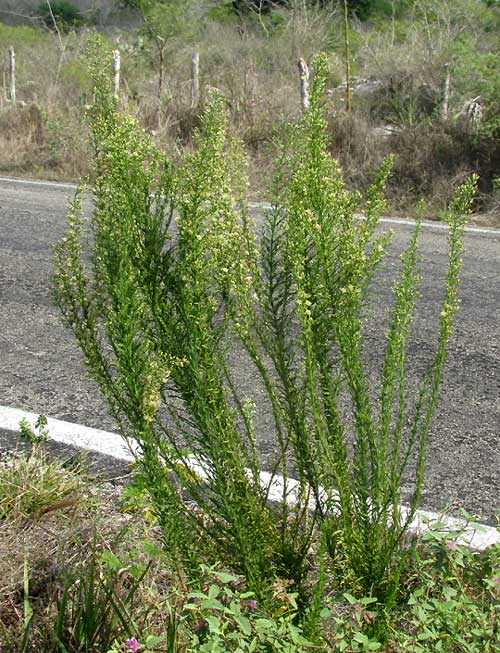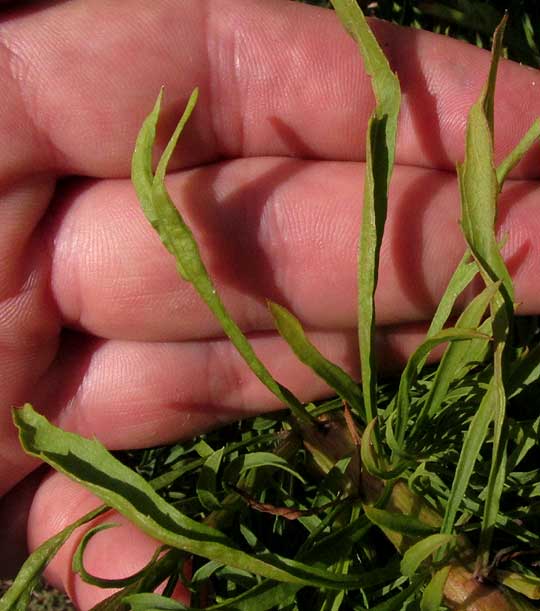Excerpts from Jim Conrad's
Naturalist Newsletter
from the June 14, 2015 Newsletter issued from Río Lagartos, on the Yucatan Peninsula's northern coast (~N21.60°, ~W88.16°), Yucatán state, MÉXICO
ROADSIDE HORSEWEED
Beside the coastal road between Río Lagartos and Las Coloradas a chest-high weed was prodigiously flowering and fruiting even though it'd done most of its growing during the very hot, rainless dry season. It's shown below:

First, I looked closer at the plant's flowering area, finding flowering, fruiting, and mature, empty heads all intermingled, as shown below:

The flowering heads, typical of the big Composite or Daisy Family, consisted of closely packed, cylindrical disc flowers surrounded by ray flowers with very short, white, flat corollas, all enclosed in a greenish "involucre" consisting of overlapping, narrow bracts, or phyllaries, as seen below:

Something to notice in that picture is that the green phyllaries are hairless, or "glabrous." This feature is very important in distinguishing the various horseweed species likely to be found here, for the other species bear definitely hairy phyllaries.
When a breeze passed by, several tiny, white-parachuted, cypsela-type fruits were blown from their fruiting heads. Below, some cypselae with their white prachute-hairs, or bristles, are shown on the tip of my finger:

The plant's leaves were twisty from lack of rain, but you can see their general form -- slender with a few obscure teeth and sometimes developing a lobe or two -- below:

Three horseweed species are listed for the Biosphere Reserve, and one of those is the same Horseweed common along North American roads, ERIGERON [CONYZA] CANADENSIS. Despite the Canada in its name, Horseweed is native throughout North America from southern Canada south through all of the US into much of Central America, plus it's invasive in much of the rest of the world.
Maybe because Horseweed is a native American plant, America's indigenous people found good uses for it. They ate it, at least its young leaves and shoots, boiled, cooked with other ingredients, or dried for later use. Medicinally the traditional herbal uses are so many -- "antirheumatic, astringent, balsamic, diuretic, emmenagogue, styptic, tonic and vermifuge," one source says -- that you just wonder. Indigenous Americans also boiled it in the waters making steam for sweat lodges, took it as a snuff to stimulate sneezing when they had colds, and burned it to create smoke to ward off flying bugs.
So, this is one of those tough, aggressive, yet useful beings that might survive global warming and all other upcoming human-made disasters. One does well to tip a hat to it and wish it the best.